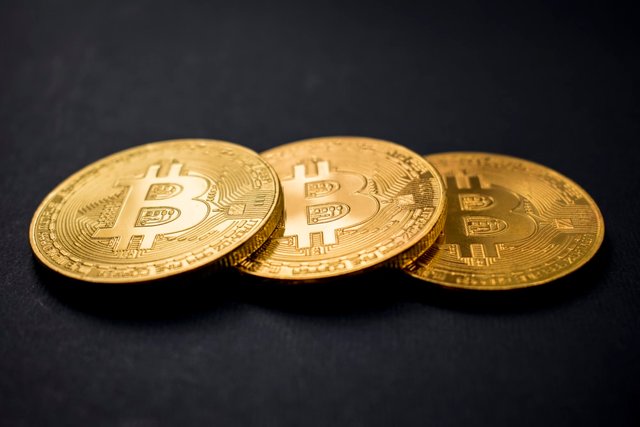CRYPTOCURENCY
BITCOIN TODAY
Where fiat currencies such as the US Dollar are issued by central banks, there is no central body 'issuing' Bitcoin. Instead, it’s written into the Bitcoin protocol that new Bitcoin be 'issued' as a reward to miners for validating a ‘block’.A block on the Bitcoin blockchain is a file which stores 1MB worth of Bitcoin transaction records. In the case of Bitcoin, blocks are added to the blockchain through a consensus mechanism called proof of work (PoW). In PoW, miners compete to add the next block in the chain by using special hardware to solve a complex mathematical problem. This produces a hash – a seemingly-random 64 character output. Once the hash is found, the block is closed and cannot be amended. After successfully mining a block, miners are rewarded with newly-created Bitcoins. This process occurs roughly every 10 minutes.When Bitcoin was first released in 2009, the reward was 50 BTC per block. Halvings are programmed in to take place every 210,000 blocks that have been mined, which takes roughly four years.In 2012, it was reduced to 25 BTC per block. In 2016, it was reduced to 12.5 BTC per block. This year’s halving will see the block rewards fall from 12.5 to 6.25 Bitcoin. The fourth halving is expected in 2024 when the rewards will fall to 3.125 new BTC, and on it goes.
Why do it?
Bitcoin’s supply is limited to 21 million units by its in-built algorithm. No more than that amount can ever exist.Bitcoin operates on a model of deflation. This means that, gradually, less and less Bitcoins will be released over time until the supply stops completely. There are currently around 18 million BTC in circulation, which is roughly 85% of the total cap. The last Bitcoin should be mined around the year 2140.This is different to fiat currencies, which use an inflationary model. Inflation is a model where central banks can print extra units of currency at will – a practice that is often criticised and has historically led to some major economic problems. Nobody can randomly inflate Bitcoin’s supply as they see fit.
Limiting supply has also proved a good way to drive adoption. It incentivised prospective investors to buy Bitcoin before it runs out.Essentially, the halving is a mechanism programmed into Bitcoin that’s designed to prevent inflation. It’s supposed to prevent miners mining all the Bitcoins too fast and thereby throwing the supply-demand equation out of whack.
When is it?
As noted earlier, halvings are programmed in to take place after every 210,000 blocks that have been mined, which takes roughly four years.It is expected that the next Bitcoin halving will occur between the 14th and 18th May 2020. However, this is just an estimate and the exact date of the halving is not yet known as a lot of things can change the projected date, such as an accelerated or reduced rate of the generation of new blocks.
Will it impact price?

In theory, if supply slows down and demand stays constant, prices will rise. The deflationary nature of Bitcoin makes it scarce and when something is scarce, it has more value.Furthermore, miners and mining pools are earning less Bitcoin for their efforts. Miners have costs, such as electricity and equipment. Some won't find it profitable to mine anymore and they'll give up. Those miners who continue to mine will have to sell their Bitcoins at a profitable rate, which will increase Bitcoin's asking price.In the past, the halving has correlated with an increase in the price. The first halving took place on 28 November 2012, when one BTC was worth around $11. In the course of just a year after event, Bitcoin’s price swelled to $1,100. The second halving took place in July 2016. Bitcoin maintained a price of around $600–$700 before flying to $20,000.The cryptocurrency space is different now though, and the impact of the halving harder to predict. It is a more mature space, with institutional investors and products such as futures meaning that the cut to supply is more likely to be more priced in than previously. There are also other cryptocurrencies such as ETH and XRP to take into account, offering competition for users.



REFERENCES
https://unsplash.com/s/photos/bitcoin
https://www.dreamstime.com/photos-images/bitcoin.html
https://www.luno.com/blog/en/post/bitcoin-halving-need-to-know